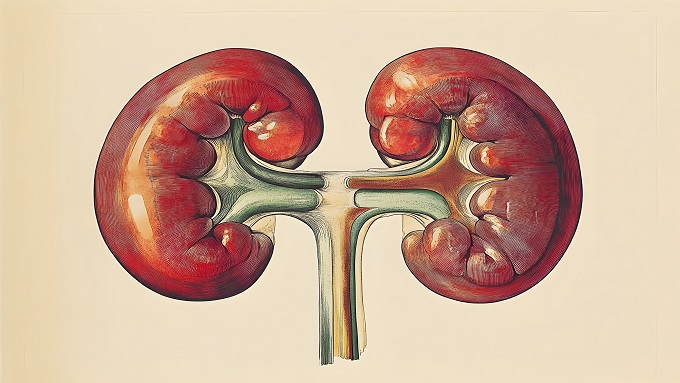MALARIA INCIDENCE IN EAST KUTAI, EAST KALIMANTAN, INDONESIA 2016: AN EPIDEMIOLOGY STUDY

Downloads
Highlights:
1. Most malaria infections found in East Kutai Regency were found within the male group and had high contact with forest areas.
2. Malaria infections were found predominantly in the male group aged 25 to 34 years old.
3. Most of the malaria infections found were caused by Plasmodium vivax.
Abstract:
Background: Malaria is endemic in Indonesia and knowing the factors that are involved in malaria infection will help the development of surveillance, prevention, and disease control. Objective: This study aimed to identify the profile of malaria infection and the vectors known in East Kutai Regency, Indonesia, in 2016. Material and Method: This research was a descriptive observational study with a cross-sectional design. The sample used was taken from the 2016 annual report of The Health Office, East Kutai Regency. We evaluated malaria indicators, disease distribution, incidence (age, sex, and occupation), plasmodium species found and known vectors. Result: In 2016, there were 55 confirmed cases of malaria infection in East Kutai. The Annual Parasite Index was 0.16 per 1,000. Malaria patients were dominated by males (85.5%), aged between 25-34 years old with a mean age of 29.56 years. Most of the patients lived in Rantau Pulung (41.8%). Most of the patients had work that had high contact with forest areas (70.9%). Most of the patients were infected with Plasmodium vivax (58.2%). Identified vectors were Anopheles balabacensis which was found in Kaliorang District. Conclusion: The East Kutai Regency was classified as Low Case Incidence Area with most cases found in males of 24 to 34 years old whose work had high contact with forest areas. The identified plasmodium species were Plasmodium vivax and Plasmodium falciparum while the identified vector was Anopheles balabacensis.
Allotey, P.A. Reidpath, D.D. Evans, N.C. Devarajan, N. Rajagobal, K., 2015. Let's talk about death: data collection for verbal autopsies in a demographic and health surveillance site in Malaysia. Global Health Action; 8:28219. doi: 10.3402/gha.v8.28219.
Barbieri, A.F. Sawyer, D.O., 2007. Heterogeneity of malaria prevalence in alluvial gold mining areas in Northern Mato Grosso State, Brazil. Cad Saude Publica; 23:2878–86. doi: 10.1590/S0102-311X2007001200009.
Bertram, D.S. Varma, M.G. Baker, J.R., 1964. Partial suppression of malaria parasites, and of the transmission of malaria, in Aedes aegypti (L.) doubly-infected with Semliki Forest Virus and plasmodium gallinaceum brumpt. Bulletin of the World Health Organization; 31:679–97.
Cotter, C. Sturrock, H.J.W. Hsiang, M.S. Liu, J. Philips, A.A. Hwang, J. et al., 2013. The changing epidemiology of malaria elimination: new strategies for new challenges. The Lancet, 382(9895): 900–911. doi: 10.1016/S0140-6736(13)60310-4.
Ekawati, L.L. Johnson, K.C. Jacobson, J.O. Cueto, C.A. Zarlinda, I., 2020. Defining malaria risks among forest workers in Aceh, Indonesia: a formative assessment. Malaria Journal, 19(441). doi: 10.1186/s12936-020-03511-2.
Fuadzy, H. Santi, M., 2012. Distribusi kasus malaria di wilayah kerja Puskesmas Simpenan Kab. Sukabumi Tahun 2011. Aspirator; 4(2):92-9.
Health Office, E.K. 2016. Profil kesehatan Kabupaten Kutai Timur 2015.
Herdiana, H. Cotter, C. Coutrier, F.N. Zarlina, I. Zelman, B.W. Titra, Y.K. et al., 2016. Malaria risk factor assessment using active and passive surveillance data from Aceh Besar, Indonesia, a low endemic, malaria elimination setting with Plasmodium knowlesi, Plasmodium vivax, and Plasmodium falciparum. Malaria Journal, 15(1): 468. doi: 10.1186/s12936-016-1523-z.
Lestari, Y., 2017. Faktor risiko kejadian malaria di daerah penderita tinggi dan penderita rendah malaria di Kabupaten Alor, Provinsi Nusa Tenggara Timur. Universitas Airlangga.
Luthi, B. Schlagenhauf, P., 2015. Risk factors associated with malaria deaths in travellers: a literature review. Travel Medicine of Infectious Disease;13:48–60. doi: 10.1016/j.tmaid.2014.04.014.
Monteiro, T.H.A. Chaves, T.S.S. Matos, H.J.D. Sofffiatti, N.F.L. Guimaraes, R.J. Guimaraes, L.H.R. et al., 2015. Basic sanitation, socioeconomic conditions, and degree of risk for the presence and maintenance of malaria in a low-transmission area in the Brazilian Amazon. Revista da Sociedade Brasileira de Medicina Tropical, 48(5): 573–579. doi: 10.1590/0037-8682-0118-2015.
Rahayu, N. Suryatinah, Y. Kusumaningtyas, H., 2020. Discovery of malaria cases on forest workers in public health center, Teluk Kepayang, Tanah Bumbu, South Kalimantan. BIO Web Conference;20(01008). doi: 10.1051/bioconf/20202001008.
Regional Development Planning Agency, E.K., 2016. Profil daerah Kabupaten Kutai Timur 2015.
Sturrock, H.J.W. Novotny, J.M. Kunene, S. Dlamini, S. Zulu, Z. Cohen, J.M. et al., 2013. Reactive case detection for malaria elimination: Real-life experience from an ongoing program in Swaziland. PLoS ONE. Edited by T. Eisele, 8(5): e63830. doi: 10.1371/journal.pone.0063830.
Surjadjaja, C. Surya, A. Baird, J.K., 2016. Epidemiology of plasmodium vivax in Indonesia. The American Journal of Tropical Medicine and Hygiene, 95(6 Suppl): 121–132. doi: 10.4269/ajtmh.16-0093.
The Ministry of Health, R. of Indonesia., 2016. Infodatin pusat data dan formasi Kementerian Kesehatan RI: Malaria.
Wardani, D. Arifah, N., 2016. Hubungan antara faktor individu dan faktor lingkungan dengan kejadian malaria. Medical Journal of Lampung University, 5(1): 86–91.
Walter Reed Biosystematics Unit. 2022. Anopheles balabacensis species page. Walter Reed Biosystematics Unit Website.
Wen, S. Harcard, K.E. Gueye, C.S. Canavati, S.E. Chancellor, A., 2016. Targeting populations at higher risk for malaria: A survey of national malaria elimination programmes in the Asia Pacific. Malaria Journal, 15(271). doi: 10.1186/s12936-016-1319-1.
WHO., 2016. World malaria report 2016.
Copyright (c) 2022 Oktara Geovanny Saroza, Susilowati Andajani, Indah S. Tantular

This work is licensed under a Creative Commons Attribution 4.0 International License.
1. The journal allows the author(s) to hold the copyright of the article without restrictions.
2. The journal allows the author(s) to retain publishing rights without restrictions.
3. The legal formal aspect of journal publication accessibility refers to Creative Commons Attribution 4.0 International License (CC-BY).
































